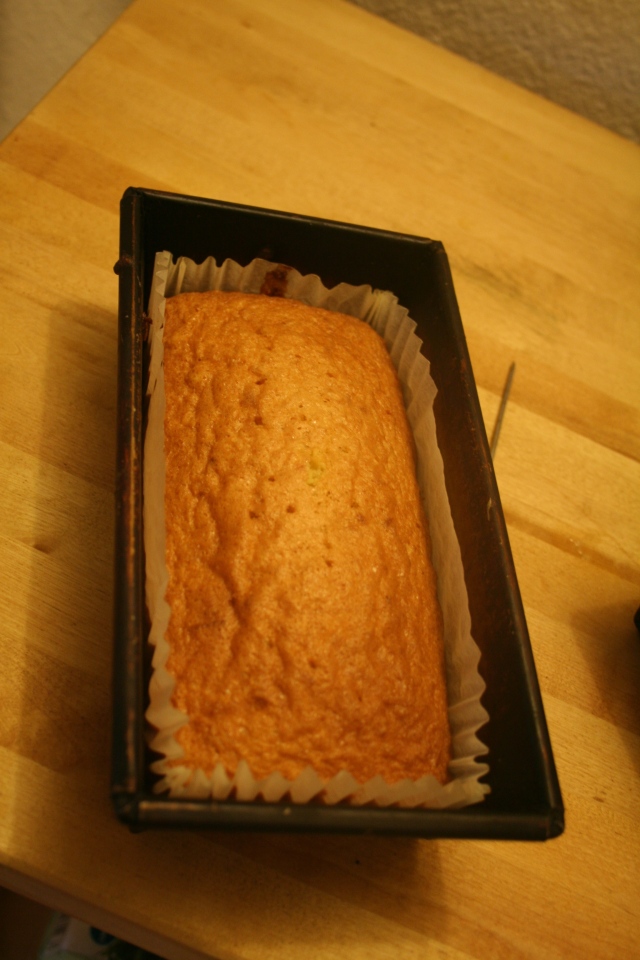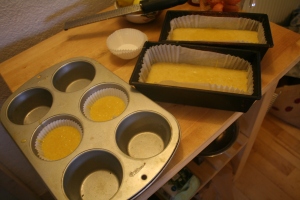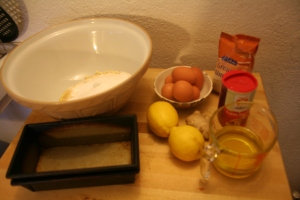Long title for a post? Probably yes, but it has also been quite a long time since my first taste of a slice of Tunisian Orange Cake in a lovely restaurant in Tarbert, Kintyre, on the west coast of Scotland.
I love Scotland, I guess that if I had not settled in Ireland I may have ended there.
It was around 2003, give or take one year, and at the time I was working on Asgard II, the Irish sail training ship, a stunning brigantine that is alas no more. We arrived in Tarbert and had a look around, and this small, inviting restaurant, the Anchorage, right on the pier was just calling us. So there we went for dinner, and the all experience was very good, food, service (and admittedly from really fussy customers) and finally the dessert, which was a very refreshing syrupy, orange cake – not your usual sponge with syrup drizzled on it, but very moist, not too sweet and really delicious!
I asked the chef, and I am really sorry but I do not remember the name, a young woman, if she would kindly give me the recipe, and – and I really love it when chefs are not holding on to their secrets – two minutes later she came out of the kitchen with the recipe saying that it was from Sophie Grigson – thing that I appreciated even more, I believe that one can tweak and experiment, but that the original creator of one recipe has to be honored.
To cut a long story short, a couple of years later I found out that I had the same recipe on one of my books, namely the Ballymaloe silver one (Darina Allen’s Ballymaloe Cookery course), Sophie Grigson had demonstrated it at the school.
The original recipe can be found very easily online, with lovely photos. It is delicious as it is, and I have baked it several times, hardly anyone that tasted it didn’t go for seconds.
Then some time ago I was looking for a recipe of lemon polenta cake with no wheat or dairy. I tried one, mixing at least three different recipes found online, with a very good outcome, but as usual I had not written anything down – no blogging plans at the time. And one day it dawned on me…instead of the breadcrumbs used by Grigson I could use coarse maize flour (in English everybody calls it polenta, but polenta is actually the dish, made out of it, a bit like calling oats “porridge”)
And so … the original calls for 200 grams of sugar, too much for my taste, so that got reduced, and then I wanted something with more bite, so… in the end what stays the same is the method, and the fantastic thing that is really quick to prepare, despite the long time in the oven.
It keeps for days – supposedly – so if you can resist and not eat it you could make it two or three or days in advance.
You can bake it in large muffin cups, nice change from the boring cupcakes…
The syrup can be tweaked – for this one I used lemon and ginger, and I will try cardamom and orange next time, or lime and mint… the possibilities are out there.
Lemon and ginger Polenta cake
Makes 2 loafs or a 23 cm round cake.
Ingredients
6 eggs
175 gr caster sugar (I once tried with Demerara and it was very good)
100 gr ground almonds
75 gr coarse maize flour
75 gr fine maize flour
zest of 2 lemons
2 teaspoon baking powder
1 teaspoon ground ginger
250 ml cold pressed sunflower oil or a light extra-virgin olive oil
For the syrup:
Juice of 2 lemons
about 1 cm fresh ginger, finely sliced or grated
80 gr sugar
Line a springform 23 cm cake tin with parchment, or you can use 2 loaf tins, lined
In a bowl, mix all the dry ingredients.
Rub the grated lemon zest with the sugar and add the oil, stirring well.
Add the eggs, mix until well combines, then incorporate the dry ingredients.
 The mixture will be very runny, a bit like a pancake batter.
The mixture will be very runny, a bit like a pancake batter.
Pour into the prepared tin,
Put in a cold oven and switch it on at 180˚C – yes, you do not need to preheat the oven!
Bake for 45-60 minutes, as usual until a toothpick comes out dry.
While the cake is baking prepare the syrup by bringing the lemon juice, ginger and sugar to the boil ad then simmer for about 5 minutes.
 When the cake is ready, let it cool for 5 minutes in the tin, then remove it from the tin and place it on the serving plate. Pour the hot syrup on top, making sure every part of the cake is soaked. The syrup will run to the sides of the dish, keep spooning it up and pouring it on the cake.
When the cake is ready, let it cool for 5 minutes in the tin, then remove it from the tin and place it on the serving plate. Pour the hot syrup on top, making sure every part of the cake is soaked. The syrup will run to the sides of the dish, keep spooning it up and pouring it on the cake.
Let cool completely, and serve with greek yogurt or cream.




This is what I was looking for,since long ago, really! Thank you Paola, you made my day!
Thanks Anna!
It is a great indeed when one finds a new, not only gluten free, but also a dairy free cake! So mille grazie, Paola. Keep surprising yourself AND us…Bon appetito per tutti!
Ooh, sounds good! I shall have to try. I’ve just recently been trying variations and translations on a lemon and olive oil cake with a salt crust, originally from the Weekly Spoonful. But as yet it’s with wheat – I’ve sent the recipe to my mother to have her develop a non-gluten variety!
But “polenta”? Gone are the days when it was just called cornmeal, then? It must sound too old school. Things have changed… I suppose there’s also a potential confusion with cornflour (amido di mais), and then polenta just sounded way more exotic than cornmeal. But my hunch is it’s all about the exoticism. We’ll have to tell them in the Varesotto just how exotic they are !!
Oh, finally someone after my own heart….! I keep telling people that calling cornmeal ‘polenta’ is like calling oats ‘porridge’, that polenta is the dish – but to no avail – even on the label it says ‘polenta’!
The lemon and olive oil with salty crust sounds good too!
Have a wonderful week-end.
You too! I hope the sun has come out in west Cork too.